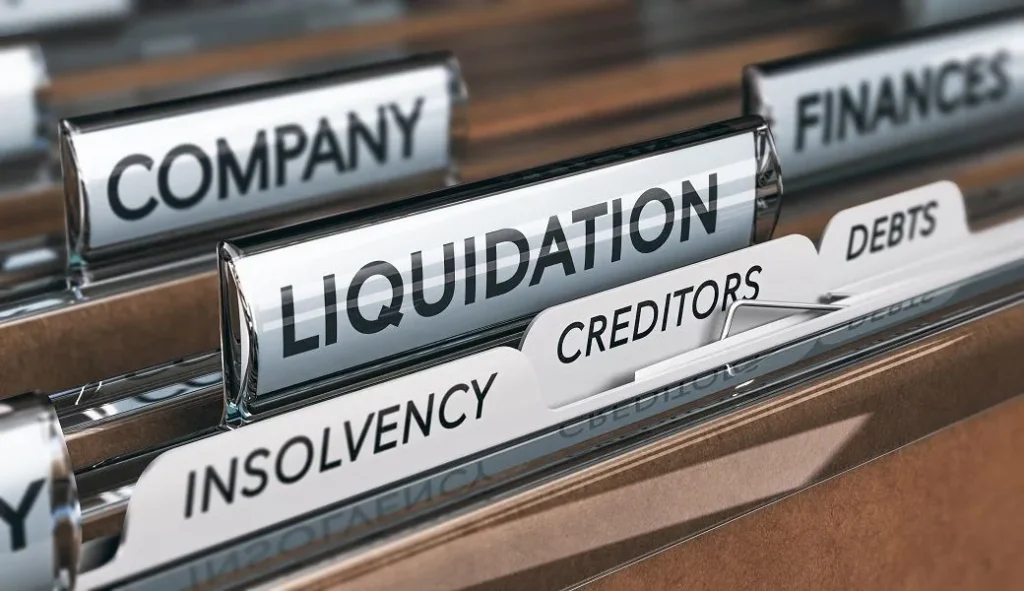
Introduction
Liquidation is the process of winding up a company. This is done by selling off the company’s assets, paying liquidation expenses and creditors. If there is any residue, it is then distributed to the company’s shareholders.
Types of liquidation
Liquidation can be voluntary or involuntary as explained below. It is done in terms of the Insolvency Act (Chapter 6:07) or “the Insolvency Act”.
Involuntary liquidation
This is done in terms of section 6 of the Insolvency Act. An aggrieved creditor can make a Court application for the liquidation of the company if the company is unable to pay its debts as contemplated in section 3. According to section 3(1) a debtor is deemed to be unable to pay his or her debts upon proof that the debtor is generally unable to pay debts which are due and payable or proof that the debtor’s liabilities exceed the value of the debtor’s assets. Following such an application by a creditor, the Court will decide whether to place the company in liquidation or not.
Voluntary liquidation
In the case of voluntary liquidation, the process is initiated by the debtor / company itself. In other words the company voluntarily decides to go into liquidation, subject to certain legal requirements.
There are two ways a company can go into voluntary liquidation through a resolution, names through:
- Voluntary liquidation by Court through a Court application by the company for voluntary liquidation in terms of section 5 of the Insolvency Act, or
- Through voluntary liquidation by creditors in terms of section 9 of the Insolvency Act.
So put differently, in the case of voluntary liquidation the company passes a resolution which is approved:
- By the Court following a Court application in terms of section 5, or
- By creditors in terms of section 9.
Voluntary liquidation of a company by Court in terms of section 5
This is a court sanctioned voluntary liquidation. According to section 5(1) of the Insolvency Act, an application to Court for the liquidation of a debtor other than a natural person or partnership may be made:
- By the debtor itself if it has resolved that it be liquidated by the Court in terms of a liquidation resolution and the debtor is not prevented by law, agreement or any other legally enforceable reason, from passing such a resolution.
- By the company, or by one or more directors or one or more members for an order to wind up the company on the grounds that:
- The directors are deadlocked in the management of the company and the members are unable to break the deadlock,
- The members are deadlocked in voting power, and have failed for a period that includes at least two financial years to elect successors to directors whose terms have expired,
- It is otherwise just and equitable for the company to be liquidated.
In terms of section 5(4) every application to the Court for voluntary liquidation must be accompanied by:
- A Statement of Affairs of the Company corresponding substantially with Form A of the First Schedule to the Act, and
- A certificate of the Master, issued not more than 14 days before the date on which the application is to be heard by Court, that sufficient security has been given for the payment of all costs in respect of the application that might be awarded against the applicant.
Voluntary liquidation by creditors of insolvent debtor in terms of section 9
I have written many articles on this type of liquidation. In summary, in this type of liquidation the company passes a resolution for its voluntary liquidation and the resolution has to be adopted by the company’s creditors in a meeting of creditors.
Section 9 voluntary liquidation involves the following:
- The company / members passing a liquidation resolution,
- The creditors adopting the resolution,
- The liquidation resolution being filed with the Registrar of Companies within 3 days.
According to section 9(5) the notice to known creditors of the meeting to consider the voluntary liquidation resolution should be accompanied by:
- Copy of Statement of Affairs corresponding to Form A,
- Copy of the resolution to be tabled for adoption,
- Certificate from the Master, issued not more than 14 days before the date of the meeting.
Conclusion
Voluntary liquidation of a company through a resolution can be sanctioned by the Court in terms of section 5 or by the creditors through section 6.
Disclaimer
This simplified article is for general information purposes only and does not constitute the writer’s professional advice.
Godknows (GK) Hofisi, LLB(UNISA), B.Acc(UZ), Hons B.Compt (UNISA), CA(Z), ACCA (Business Valuations) MBA(EBS, Heriot- Watt, UK) is the Managing Partner of Hofisi & Partners Commercial Attorneys, chartered accountant, insolvency practitioner, commercial arbitrator, registered tax accountant and advises on deals and transactions. He has extensive experience from industry and commerce and is a former World Bank staffer in the Resource Management Unit. He was recently appointed to sit on the Council of Estate Administrators in Zimbabwe. He writes in his personal capacity. He can be contacted on +263 772 246 900 or ghofisi@hofisilaw.com or gohofisi@gmail.com. Visit www//:hofisilaw.com for more articles.

